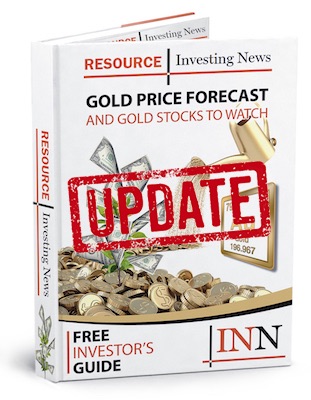The World Gold Council’s (WGC) Mid-year Outlook Report for 2018 has been released, and it notes that gold was down more than 4 percent in Q2.
The council believes that despite a dismal performance in the second quarter of this year, the precious metal will rally due to positive but uneven economic growth, trade wars and their impact on currency and rising inflation and an inverted yield curve.
“[G]old’s price momentum and investor positioning in derivatives markets has accelerated its descent. We believe, however, that there may be reasons to be more optimistic during the second half of the year,” the WGC says in the report.
Here’s a look at three key macro trends that will influence the yellow metal’s behavior in the second half of the year, according to the WGC.
1. Positive but uneven economic growth
One of the first factors that WGC believes will positively impact gold for the remainder of 2018 is economic growth, even if its patterns are uneven from region to region.
“Global growth has generally been increasing over the past couple of years. But this growth has not been consistent across regions. As we look forward, however, we see support for gold from key regions,” the WGC states.
The first region where the WGC sees support for the yellow metal is in China.
The report states, “[a]s China has transitioned from an investment-driven to a consumption-driven economic model, its growth rate has slowed slightly. However, as it becomes less dependent from foreign investment and solidifies its leading role in Asia, China’s economic expansion will likely be more robust.”
The WGC believes that China’s expanding economy, paired with the size of the Chinese local market, will likely produce positive results for gold.
The WGC also believes that India will prove successful for gold in Q3 and beyond.
“The second half of the year is usually positive for gold as the harvest and wedding seasons during the autumn provide seasonal support for the market. In addition, the economic policies rolled out by the government to draw the informal, cash-based economy into the formal sector are starting to translate into stronger economic growth: India’s Q1 GDP growth rate was close to 7.7 percent – making it one of the fastest growing economies in the world,” the WGC states.
Finally, the US economy has also been making gains since around 2016 and demand for gold jewellery has risen.
2. Trade war and its impact on currencies
While the WGC acknowledges that the US dollar has made impressive gains during the second quarter of this year, analysts are quick to note that all the reasoning behind the uptick cannot be placed on rising US interest rates as they have been increasing since 2016.
“It would be easy to apportion this trend to higher US interest rates, but rates have been increasing consistently since the end of 2016 – a period during which the US dollar generally depreciated. Instead, the dollar strength is due to a combination of two factors; continued easy monetary policy in other parts of the world [and] a perception that the US may be better placed to benefit from trade wars, at least in the short term,” the WGC says.
Despite these factors, several economists believe that an increase in tariffs, and thus the spike in trade war concerns, will eventually have a negative impact on economic growth. However, while this could decelerate gold demand slightly, its effect may be lessened by a weakened greenback, which, as history has shown, pushes forward the price of gold.
3. Rising inflation and an inverted yield curve
While inflation has been rising slowly over the past few years, it now sits close to 2 percent in Europe and China, 2.9 percent in the US, and 5 percent in India, to show a few examples.
The WGC notes, “[l]ooking forward, the expansion of protectionist economic policies has significantly increased the risk that inflation will accelerate further. And companies facing higher tariffs will likely pass the bill to consumers. Historically, investors have used gold as an inflation hedge, with the result that its price has increased substantially when inflation rises above 3 percent.”
When a combination of high inflation and a decline in economic growth come together it can create a complicated scenario for central banks.
“This is especially true for the Fed, as its mandate includes price stability, full employment and moderate long-term interest rates,” the WGC adds.
As stock prices continue to rise, US bond markets are beginning to place greater probability on higher inflation and lower growth.
“On the one hand, TIPS and TIPS breakevens (a proxy for inflation) have continued to rise, but the nominal yield curve has flattened significantly and is close to becoming inverted,” the WGC says.
This is due to the fact that an inverted yield curve has proved to be a precursor to recessions in the US.
Although it is impossible to time the market, investors have generally benefited from holding gold during periods of economic decline.
As of 12:31 p.m. EST on Thursday (July 19), gold was trading at US$1,216.60 per ounce.
Don’t forget to follow us @INN_Resource for real-time news updates!
Securities Disclosure: I, Nicole Rashotte, hold no direct investment interest in any company mentioned in this article.
The post 3 Factors That Could Boost Gold’s Performance in the H2 2018 appeared first on Investing News Network.
From:: Investing News Network

